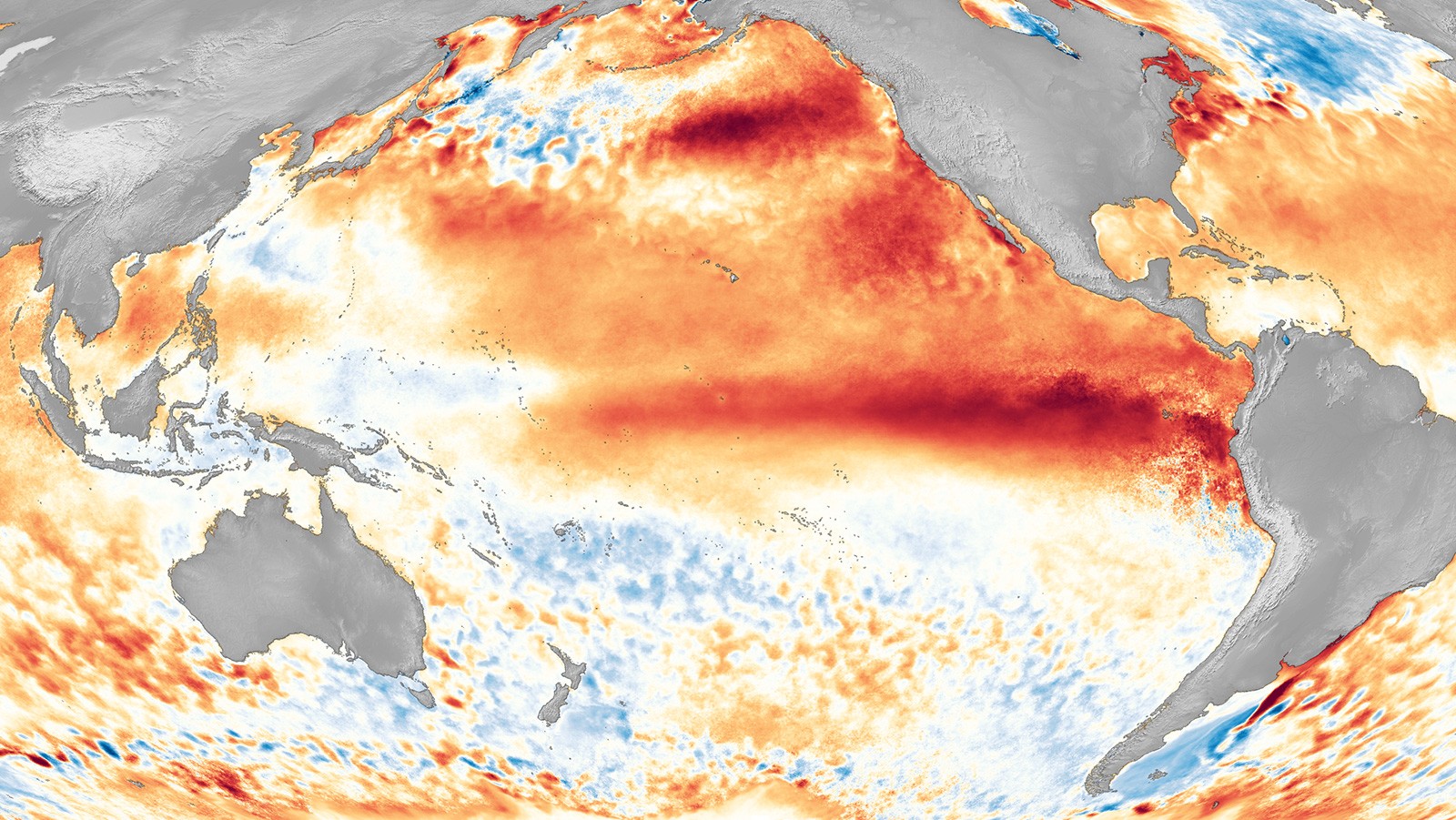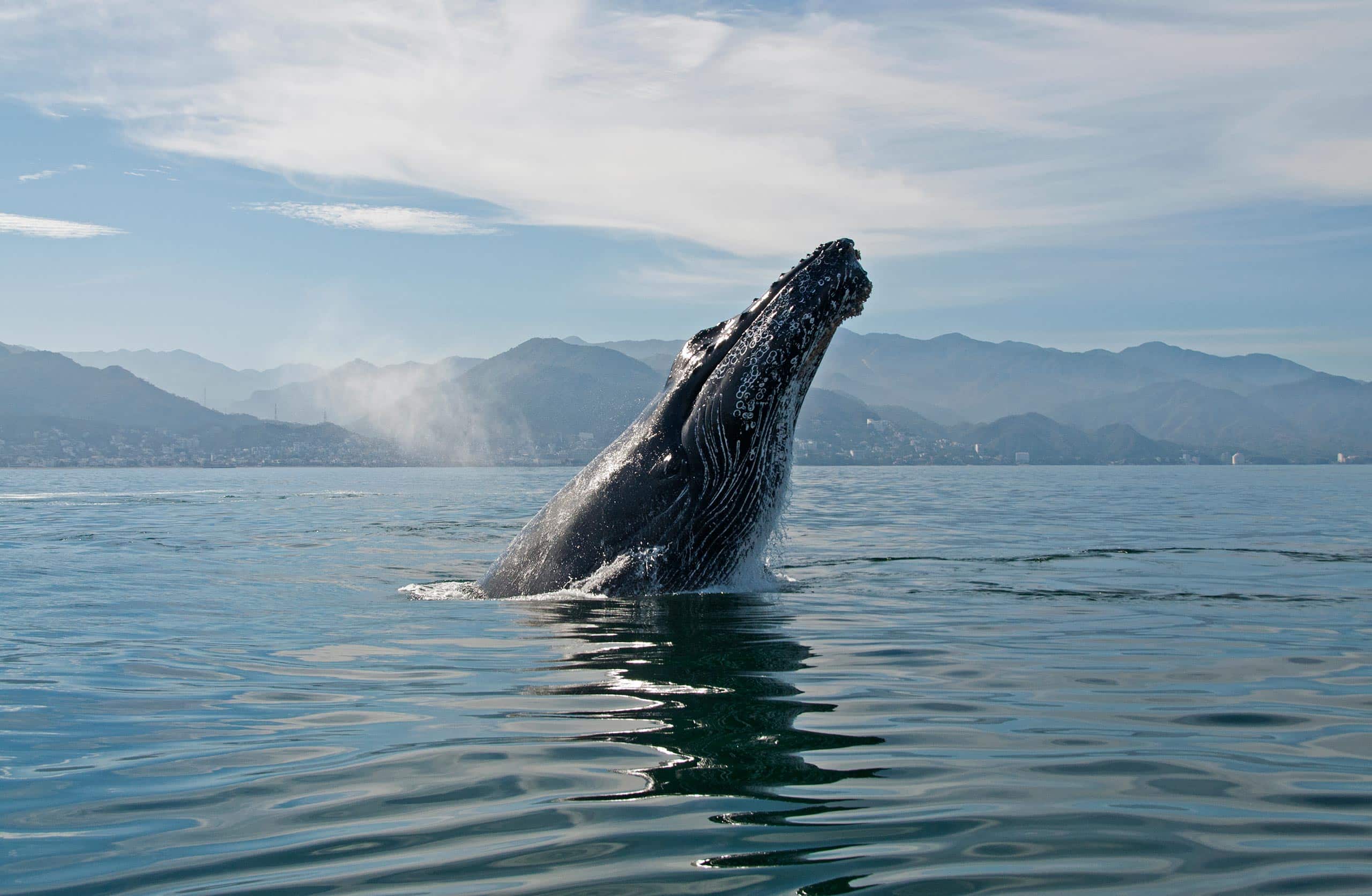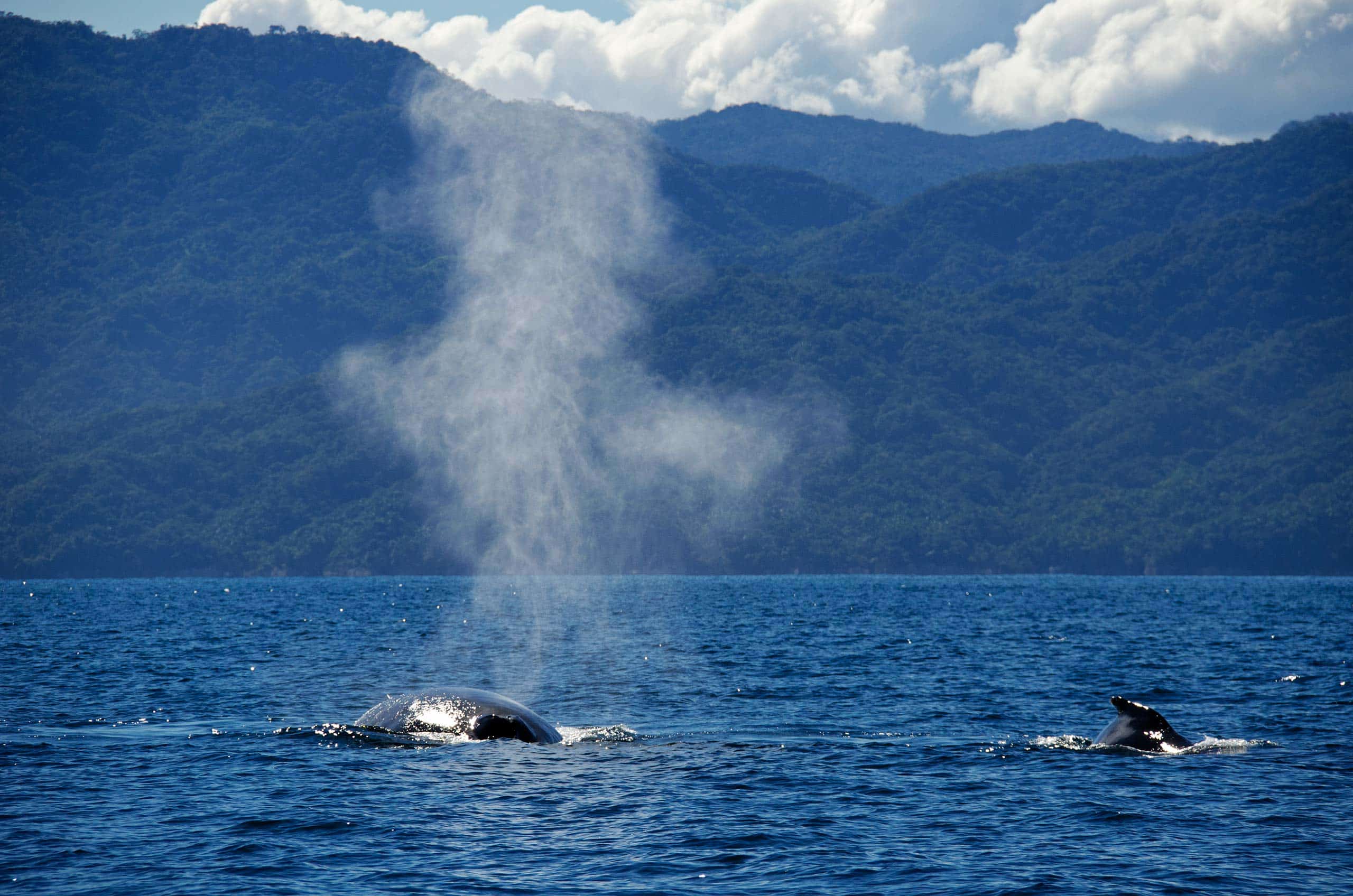CONSERVATION &
Marine Mammal Regulations
Ocean Friendly Tours is extremely conservative regarding visiting the Humpback whales in their oceanic environment. We do everything that we can not to modify natural behavior and follow Mexican and USA laws regarding marine mammal viewing and we also have our own best practices to limit our impact.
In our commitment to responsible whale watching, Ocean Friendly Tours strictly adheres to both Mexican and USA regulations governing marine mammal viewing. Our dedication to preserving the natural behavior of Humpback whales is unwavering. To ensure minimal impact, we have developed our own set of best practices that supplement these regulations. The diagram below provides a straightforward overview of the Mexican guidelines we follow while observing these majestic creatures in the Bay of Banderas. These basic rules serve as our guiding principles during every whale watching excursion, ensuring a harmonious coexistence with these incredible marine beings
This diagram gives a very simple explanation of the Mexican regulations that we follow while viewing Humpback whales on the Bay of Banderas.
Regulations for Whale Watching:
NOM-131-SEMARNAT-2010
There are three basic rules for whale watching:
- Minimize Impact: Ensure minimal disturbance to the whales.
- Be Patient: Practice patience during the observation.
- Authorized Observations Only: Observe whales only with boats or companies authorized by SEMARNAT.
However, as a conscious ecotourist, you should know:
- The minimum distance for observing whales is 240 meters (800 ft.) for unauthorized boats.
- A maximum of 4 boats is allowed around a single whale or group of whales.
- Authorized boats must maintain a minimum distance of 60 meters for smaller vessels (less than 10 meters in length) and 80 meters for medium to larger vessels (more than 10 meters in length) from any whale or group of whales.
- The maximum speed allowed within observation areas is 5 knots or 9 km/h, reducing to 2 knots or 4 km/h upon entering the observation zone. Boats should always move at a slower speed than the slowest whale in the group, avoiding abrupt acceleration or deceleration.
- Avoid sudden changes in speed and direction, as this can frighten the whales and may lead to accidents.
- If whales change their direction, breathing pattern, or activity, do not approach them; instead, move away slowly.
- Approach whales from the rear, never from the front or by surrounding them, as this can be threatening to them.
- Mother whales with calves are extremely sensitive, so approach them with extreme caution.
- It is prohibited to disperse a group of whales or interrupt their activities.
- Do not throw or dispose of any waste, especially plastic, cigarette butts, or synthetic materials that could harm the animals if ingested.
- No sport or commercial fishing is allowed near whales.
- Swimming, snorkeling, diving, kayaking, parasailing, or jet skiing is not permitted in areas where whales are present, as it can be dangerous and disrupt the natural behavior of these animals.
- Towing dinghies or any objects, or dragging ropes, lines, nets, hooks, or similar items during whale watching is strictly prohibited to prevent accidents.
- For your safety, always wear a life jacket.
Feel free to print this whale watching regulation format and keep it on your boat for reference.
Current
Whale Research Projects
Information regarding our Current Research Projects can be accessed through the Deep Blue Conservancy website.
We formed Deep Blue Conservancy as a U.S. 501(c)3 non-profit corporation so that we are able to apply for corporate grant opportunities and accept tax-deductible contributions from our guests and other like-minded individuals. These donations directly benefit our research, education and conservation efforts.
These tax-deductible contributions allow us to continue our research, the results of which are ultimately transformed into educational programs and marine and coastal conservation efforts.
Please visit Deep Blue Conservancy to learn more about our ongoing research, the Whale Songs project and the Kite Aerial Videography & Photography Project. We ask you to please consider making a tax-deductible contribution benefiting our ongoing research programs. Information about making contributions can be found on the Deep Blue Conservancy donation web page.
MAKE A DONATION TODAY TO HELP CONSERVE THIS INCREDIBLE SPECIES!
Whale Songs
The Humpback Whale Songs of Banderas Bay, Puerto Vallarta, Mexico
Humpback whales produce some of the most magnificent and complex vocalizations than any other creature on the earth. Ocean Friendly Tours has been documenting and recording the acoustical symphonies of the Humpback whales off shore Puerto Vallarta for over a two decades. We have adopted the use of some of the most extremely sophisticated hydrophone and broadcast quality recording equipment available.
Samples of our recordings can be found below in both WAV and MP3 format. These recordings were made during our regular whale watching excursions in Banderas Bay. Join us on one of our whale watching excursions and perhaps you will be able to experience these incredible vocalizations for yourself.
For more detailed information about the vocalizations of the Humpback whale visit our friends at Whale Trust.







